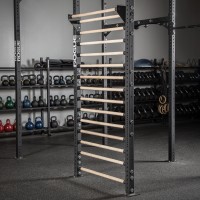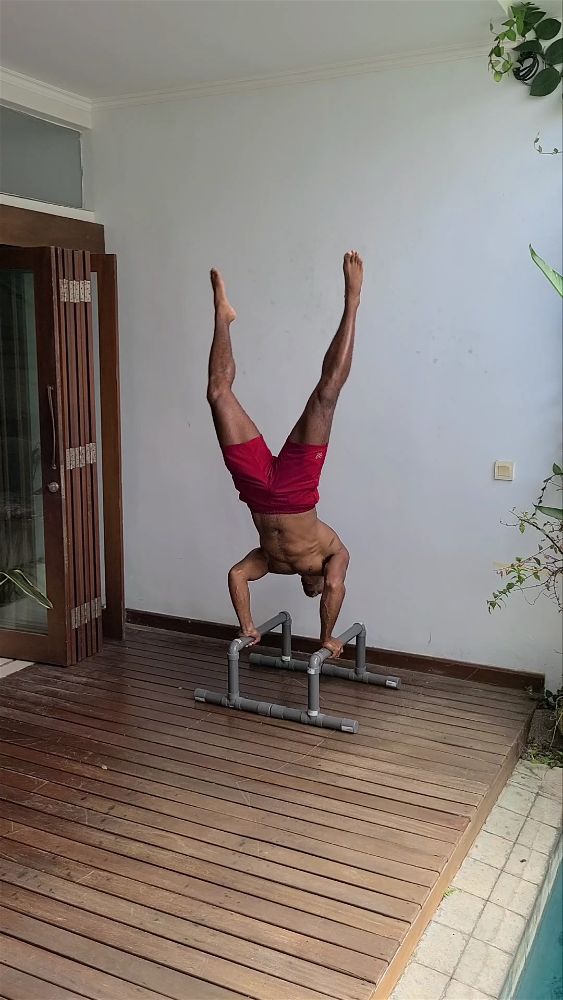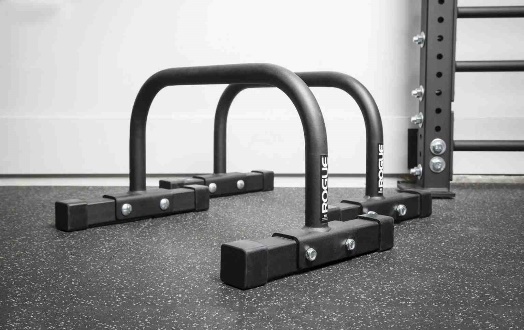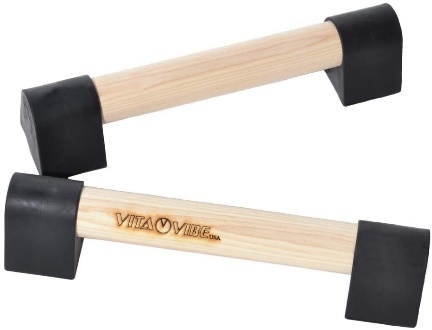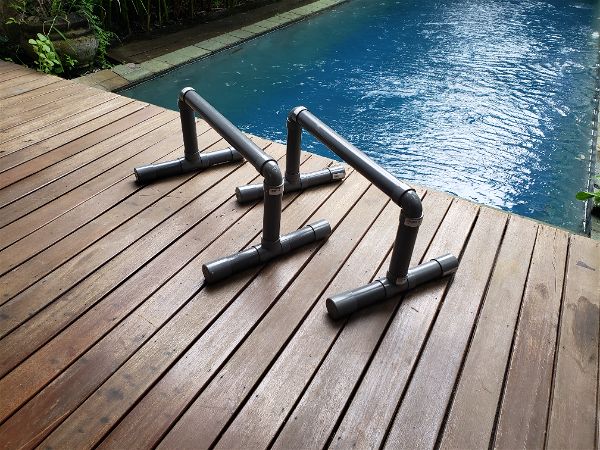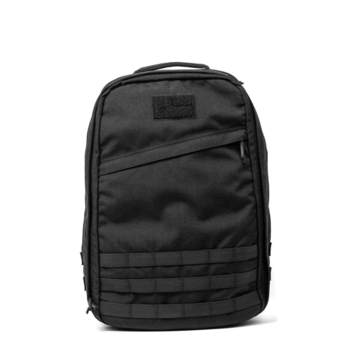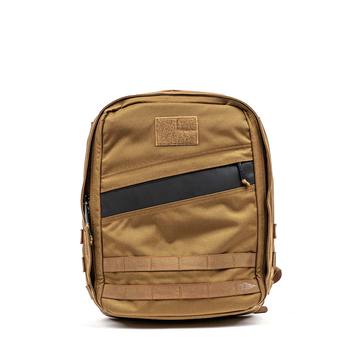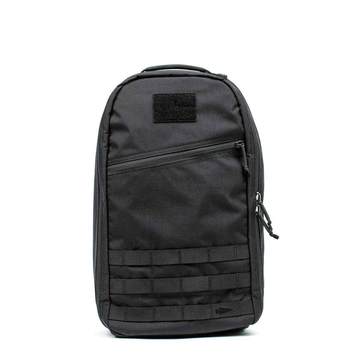No matter what your fitness goals are, calisthenics workouts can be a great way to get the body you want. It’s easy to do at home and calisthenics equipment can help you get more out of your workout. In this post, we’ll talk about the essential calisthenics equipment you need for a perfect home (or travel) gym and how it can help you get the perfect workout to build strength, build muscle, and burn fat, anytime.
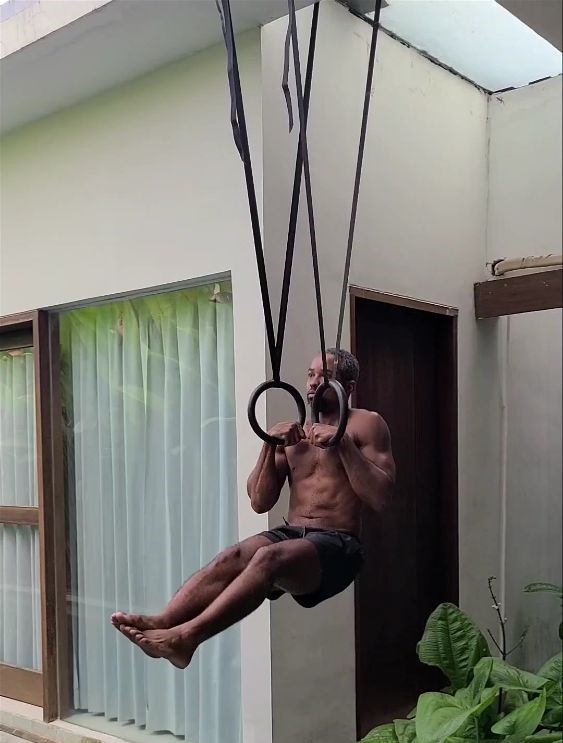
CONTENTS ULTIMATE CALISTHENICS EQUIPMENT LISTS
- Why you need equipment to do calisthenics better: more resistance and range of motion
- What are Calisthenics
- Why you need equipment to do calisthenics better: resistance and range of motion
- Two Methods for increasing resistance in calisthenics: Progressions and weights
(Click any piece of equipment to jump straight to the descriptions and recommendations)
The Essential Calisthenics Equipment
- Gymnastics rings
- Suspension trainer
- Pull up bars
- Resistance bands
- Parallettes and dip bars
- Dip bars vs. Parallettes
- Door anchors
- Sliders
- Plywood stability board (~2’x3′)
- Foam roller
- Lacrosse ball (for recovery)
- PVC pipe or wooden dowel
- Voodoo tape
- Weight vests
- A “rucksack” or tough backpack and weight
- Speed rope
- Yoga blocks
- Chalk
- Calisthenics gloves
- Sandbags
- Sandbag kettlebells
WHAT ARE CALISTHENICS?
In calisthenics, bodyweight exercises that run from simple, like push-ups, lunges, sit-ups and squats, to extremely complex gymnastics movements, like muscle ups, 90 degree push-ups, V-sits, and more, are used to develop strength and flexibility comparable or exceeding that of weightlifting and other fitness modalities.
On top of the strength and flexibility you gain through your normal calisthenics training, calisthenics have the benefit of requiring very little, or no, resources – no gym, no weights, no membership necessary.
Calisthenics is a form of exercise that requires very little equipment and uses primarily bodyweight to build strength and muscle. The word calisthenics comes from the ancient Greek “kallos” which means beauty and “sthenein” which means to stretch or draw out. So, calisthenics can be translated as “beautiful stretching”.
Calisthenic movements are typically fluid in nature with one movement flowing into another. This flow helps keep the heart rate up during an intense workout by keeping the blood flowing throughout your system while also working different muscle groups at once for an even more effective workout.
WHY YOU NEED CALISTHENICS IN YOUR TRAINING ROUTINE
- Calisthenics equipment allows us to get in a great workout that builds muscle and strength without a gym, without weights, and without machines
- Calisthenics equipment is super portable which allows to get in a workout at home, in a park, and guaranteeing a workout while traveling
- Calisthenics equipment is less expensive than weights, gym memberships and machines
- Calisthenics equipment are versatile and allow you to work on strength, muscle building, or fat burning with the same equipment
- Calisthenics generally develop more mobility, flexibility, and strength through range than isolating weight lifting movements
- Every movement that is possible with weights is possible with calisthenics, if you have the right equipment.
WHY YOU NEED EQUIPMENT TO DO CALISTHENICS BETTER: RESISTANCE AND RANGE OF MOTION
Having a few pieces of specific calisthenics equipment, like gymnastics rings and dips, increases the number of different exercises we’re able to do in a session, and the resistance we can create.
Though many calisthenics movements are possible with absolutely nothing, such as push-ups or air squats, we can us a few pieces of equipment to change the direction and intensity of resistance or create extra space for movement.
For instance, pushing exercises, like push-ups and handstand push-ups, are possible on the floor, while pulling exercises, such as rows or pull-ups, require us to grab something overhead in order to use gravity in our pulling movements.
Additionally, other pieces of equipment make up for a lack of mobility. Wrist mobility can be a limiting factor in handstands, planches, and more. A pair of small parallettes allows us to more easily train both movements, while we work on improving our wrist mobility.
Ultimately, the small pieces of equipment on this will enable you to do exponentially more exercises, anywhere you choose.
Before we get into our list of essential and best calisthenics equipment, let’s talk about why we need equipment.
In calisthenics training, equipment either help increase or adjust resistance or create resistance against a particular movement using gravity.
Let’s talk about resistance in calisthenics first.
THE TWO METHODS OF INCREASING RESISTANCE IN CALISTHENICS TO BUILD STRENGTH AND MUSCLE: PROGRESSIONS AND WEIGHTS
In any exercise, improvements such as more strength and muscle are achieved by gradually increasing resistance.
In gyms, more resistance is usually achieved by putting more weights on a barbell or dumbbell.
In calisthenics we increase resistance by using “calisthenics progressions,” to adjust our exercise or by using a weight vest or weighted backpack to increase the resistance in our movement and difficulty.
Because of this, all of our calisthenics equipment is aimed at helping us achieve more resistance, in a longer range of motion, either through calisthenics progressions or weight
CALISTHENICS PROGRESSIONS
A calisthenics progression is a way of modifying an exercise to make it more difficult by changing the angle of the exercise, in relation to gravity, shifting more of the body’s weight to a single arm or leg, or changing the length of the levers as the body moves to increase difficulty. For instance, one calisthenics progression for push-ups is to raise one’s feet higher, perhaps on a chair or a box, while it is even more difficult to progress to pushing with one hand.
Each movement in calisthenics has a wide set of progressions from easy, to muscle and strength honing advanced progressions
ADDING WEIGHT TO EXERCISES WITH A BACKPACK OR VEST IS THE SIMPLEST WAY TO INCREASE RESISTANCE
Simply attaching a weight to the body is our second option for increasing resistance in calisthenics. By adding weight, we can do the same exercise, without changes to the movement, and ultimately increase resistance.
So increasing resistance with a weighted backpack or weight vest is simpler than progressions but requires more equipment.
Though we will add weights, the amount of weight required to significantly increase resistance is much less than you would need for traditional weightlifting workouts.
Weight is attached to the body via weight vests or rucksacks with sandbags, weight plates, or something similar.

In this list, we’ll include options for both.
Now, let’s review the essential pieces of calisthenics equipment
ESSENTIAL AND BEST CALISTHENICS EQUIPMENT PIECES
- Gymnastics Rings
- Suspension Trainer
- Pull Up Bar
- Resistance Bands
- Parallettes
- Door Anchor
- Sliders
- Piece of plywood

EQUIPMENT FOR PULLING EXERCISES: GYMNASTICS RINGS, SUSPENSION TRAINERS, AND PULL BARS
Our first three pieces of equipment anchor overhead and facilitate pulling movements, such as pullups, rows and muscle up variations.
Any good kit of calisthenics for home gym or travel will include at least one suspension trainer, pull up bar, or suspension trainer.
GYMNASTICS RINGS
Gymnastics rings are a calisthenics exercise tool that allow an athlete to perform virtually any gymnastics movement, pushing, or pulling, and creates a wide array of calisthenics training options.
Exercises such as pull ups, rows, and muscle ups are just as possible as levers, dips, L-sits, and even more challenging exercises.
Gymnastics rings are suspended from pull up bars or tree branches and provide an endless number of calisthenics exercises.
Gymnastics rings are likely the best calisthenics equipment pieces for a well-rounded calisthenics training program.
WHAT CAN YOU DO WITH GYMNASTICS RINGS
- Pull ups
- Dips
- Muscle ups
- Levers (front and back), skin the cats
- L-sit, V-sit,
- Plus all of the movements possible with suspension trainers
WHAT KIND OF GYMNASTICS RINGS TO PURCHASE?
Most gymnastics rings consist of wooden or plastic rings along with a heavy duty nylon strap and adjustable buckle. The main choice you will have to make is between plastic rings and wooden rings.
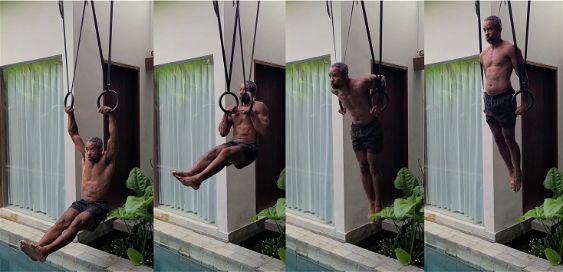
I have trained with both, and here are my thoughts.
Wooden rings allow for better grip without chalk and a more natural feel. However, if wooden gymnastics rings are left outside and frequently exposed to water or rain they will fall apart. 2 months of rain in Bali while leaving my rings outside led to mold, rot, and the rings falling apart.
Plastic rings are extremely durable and can be left outside in the elements. However, due to their non-porous nature they will become slightly slippery as your palms get sweaty, so plan on using chalk or having a towel handy.
Bottom line: If your rings will be indoors, get wood. If your rings will be left outside, get plastic.

RECOMMENDED GYMNASTICS RINGS
ALTERNATIVES TO GYMNASTICS RINGS
If you don’t have the space or setup for gymnastics rings (a bar overhead or tree), consider getting a suspension trainer that can be anchored in a doorway

SUSPENSION TRAINER
When gymnastics rings are too cumbersome or impractical, suspension trainers are an excellent alternative to enable pulling movements anywhere.
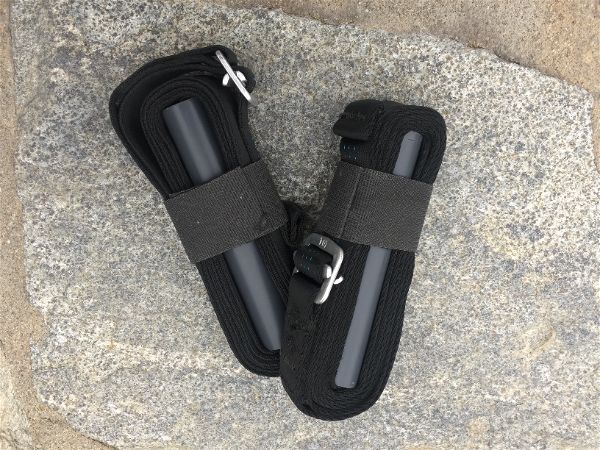
A suspension trainer is a calisthenics exercise tool that can be used to mimic the movements in gymnastics commonly performed with gymnastics rings and facilitate pull movements. But suspension trainers are commonly more compact than gymnastics rings and are more easily setup in doorways, on trees, and in virtually every overhead location.
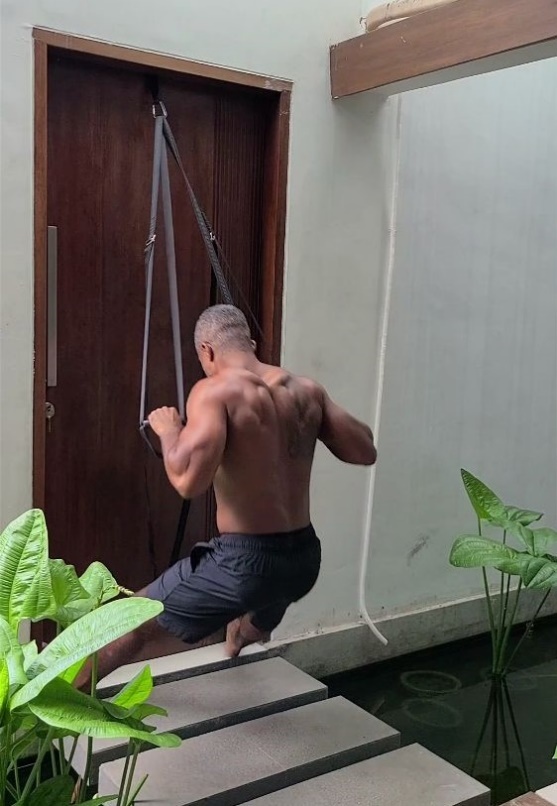
The downside is suspension trainer’s do offer less resistance than gymnastics rings, because your feet will generally be touching the ground through the entire move.
To setup a suspension trainer we generally attach it to a bar of some form (pull up bar, light pole, etc.), or clip into an anchor on a doorway to setup. From there, the user can do virtually any pulling exercise.
WHICH SUSPENSION TRAINER SHOULD YOU BUY?
I highly recommend these suspension trainers, as they are the most compact, well designed, and reliable:
- The Ponki Monkey 2 – Great, compact suspension trainer, suitable for travel
- The TRX – The original suspension trainer, tough and versatile
- Our own DIY suspension trainer – you can find the instructions here
RECOMMENDED SUSPENSION TRAINERS

PULL UP BAR
A pull-up bar is a calisthenics exercise tool used to create pulling movements, such as pull ups or rows, and can also be an anchor point for gymnastics rings or suspension trainers.
Removable pull up bars for home gyms are commonly designed to fit into doorways and either attach over the door lip using downward pressure to stay in place or extend across the doorframe using pressure and small screws to stay in place.
If you are looking for a removable pull up bar that attaches quickly and easily without damaging the doorway, the “over the lip” pull up bar is most recommended.
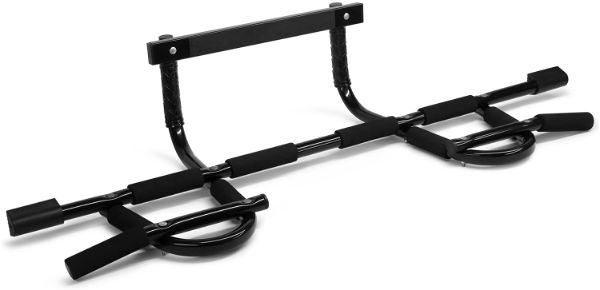
If you want your pull up station to be elsewhere in your house, a bolt in pull up station is a great, permanent option. However bolt in pull up bars require a bit more work to install.
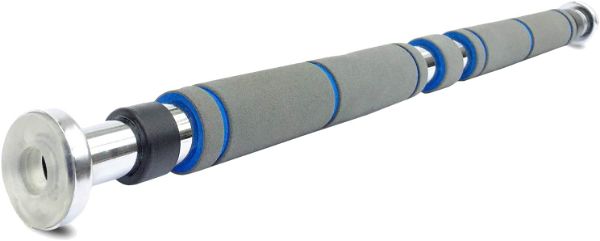
We also have stall bars. Stall bars are the most robust and versatile pull up bar option, but are also the most costly. These pull up bar stations are the most common in calisthenics gyms as they facilitate a slew of other calisthenics exercises and mobility movements. If you are creating a permanent garage gym for your calisthenics training, I highly recommend including stall bars.
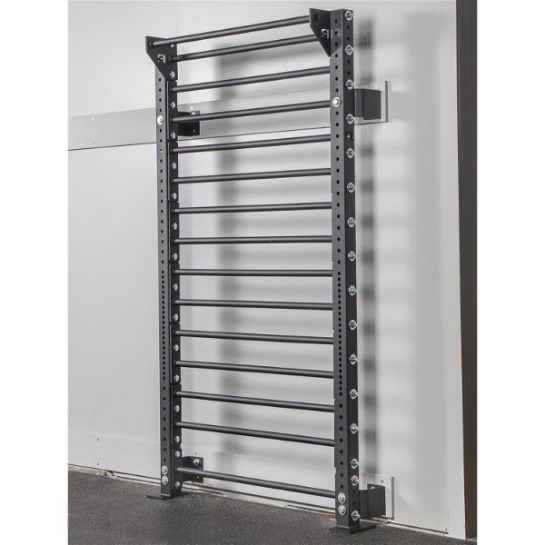
Last but not least, we have my favorite pull up bars – the ones in parks. Nearly every city in the world has a park, and most parks have some form of bar, fitness equipment, or playground that has plenty of impromptu pull up bars. Don’t forget these options.
No matter which option you choose, some form of pull up bar is essential for good calisthenics training.

RESISTANCE BANDS
Resistance bands are useful in calisthenics because they allow us to add more resistance to any movement, allowing us to progressively add more strength and muscle via calisthenics. At the same time, resistance bands can be used to decrease resistance, by supporting us in a movement we may not be strong enough to do yet.

Outside of calisthenics, resistance bands can also be used to train in the same ways and movements as we would with weights, making resistance bands a versatile and essential piece of calisthenics equipment that allows us to train any way we want.

On our days off from training, resistance bands are great to get a deeper stretch and work on mobility.
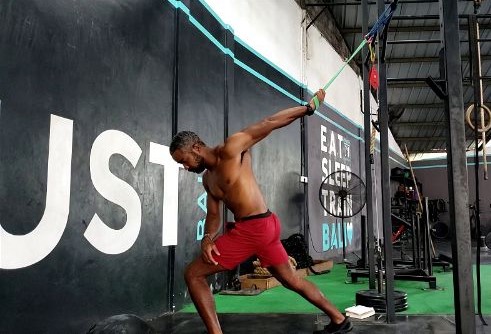
Resistance bands come in many varieties, such as tubular, flat, and with handles. In my experience, the most functional, versatile, and durable resistance bands are flat resistance bands – and I recommend getting flat resistance bands over any other.
For high quality resistance bands, such as the Rogue Monster bands, resistance can range from 15 pounds to as much as 200 pounds resistance.
I recommend purchasing at least two sets of bands – one low resistance for stretching and lighter moves, and one higher resistance, for stretching larger body parts and supporting the body in difficult moves. I’ve found purchasing a 30lbs resistance band and a 65lbs/100lbs resistance band to be the perfect mix.
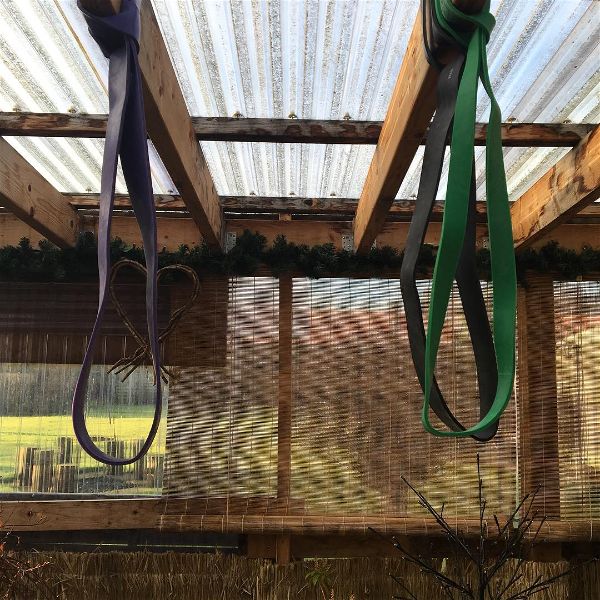
To use resistance bands in training, for overhead movements, usually pulling, use a door anchor or loop the resistance band over a pull up bar to anchor. For movements coming from the floor, simply step on the resistance band to anchor it.
Rogue Monster Bands are by far the best on the market however there are several other reputable brands with reliable bands on Amazon.
RECOMMENDED RESISTANCE BANDS

PARALLETTES OR DIP BARS
Along with a tool for pulling exercises, such as gymnastics rings, suspension trainers, or pull up bars, parallettes or dip bars are the most essential piece of calisthenics equipment. Whereas rings or pull up bars enable pulling exercises, such as rows, pull ups, and levers, parallettes and, dip bars and parallettes enable pushing and pressing movements such as dips, handstand push ups, planches, and L-sits with a greater range of motion than without and accommodation for lack of wrist mobility.

The height of the dip bars raises our body above the ground, allowing us more clearance over the ground in our movements and more range of motion than we would get by simply doing the movement on the floor. For instance, instead of simply doing short range of motion handstand push-ups on the floor, we can do deficit handstand pushups, building more range of motion, more strength, and more muscle. The same is true with push ups, dips, and every other “floor” exercise.
DIP BARS VS. PARALLETTES
The only difference between dip bars and parallettes is that dip bar stations are generally taller than parallettes, generally 30 inches or more tall, allowing for a fully vertical dipping movement. However, dip bar stations tend to be less stable than parallettes due to their higher center of gravity, and aren’t as suitable for inverted movements like handstand push ups.
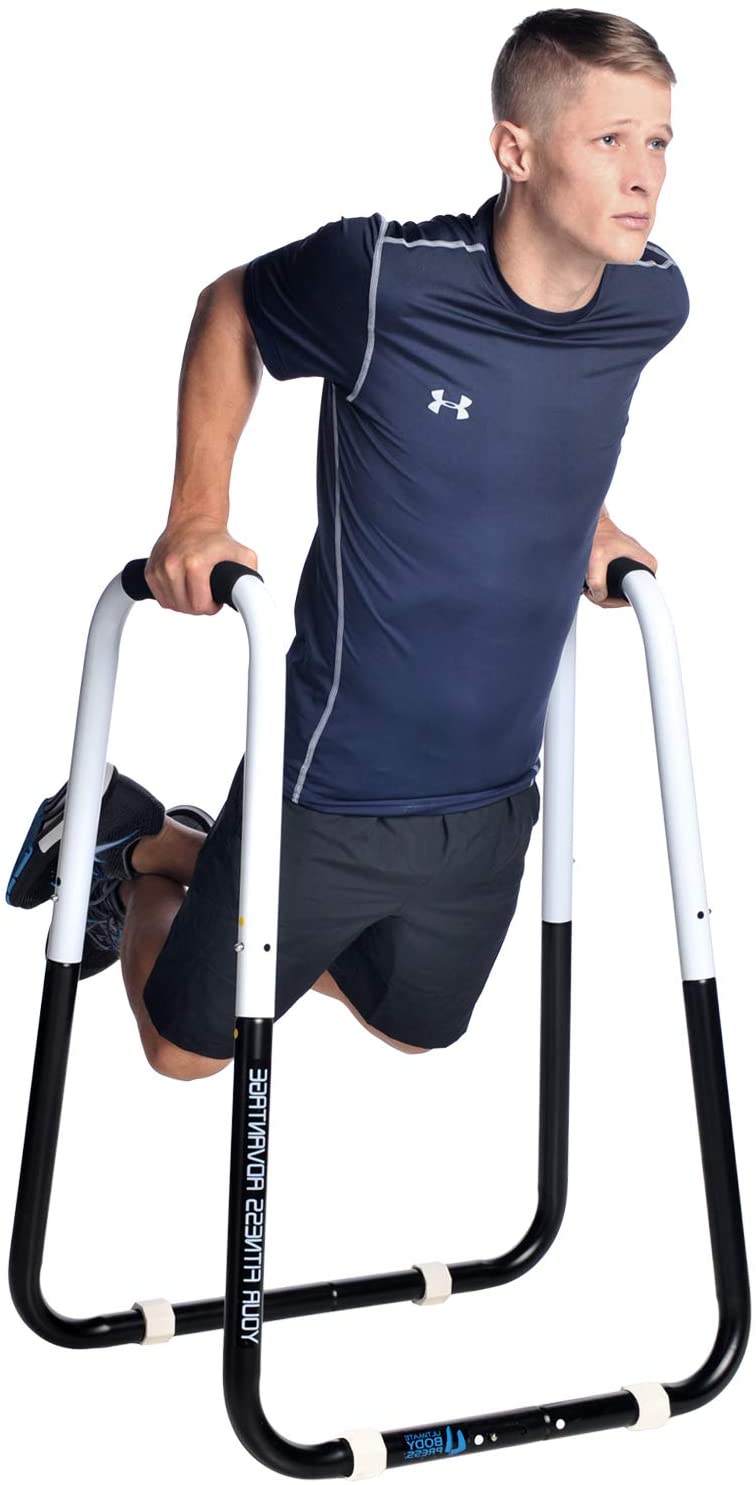
At the same time, the shorter height of parallettes, and lower center of gravity, keep parallettes more stable during inverted movements such as handstand pushups.

If you are aiming for simplicity, get a pair of parallettes as they are more portable and enable all floor moves. Pair your parallettes with gymnastics rings, to use for vertical dipping movements, and you’ll have a full calisthenics equipment kit.
In the realm of parallettes we also have high parallettes, generally taller than 5 or 6 inches, and low parallettes.
Higher parallettes give more clearance off the ground and allow for movements like dips and shoot throughs.
Lower parallettes can be more stabler, and more compact and suitable for travel, so choose accordingly
RECOMMENDED PARALLETTES
Click here to read our entire articles on the best calisthenics parallettes

ESSENTIAL CALISTHENICS EQUIPMENT ACCESSORIES
Having the core pieces of calisthenics equipment, like rings, resistance bands, and parallettes, isn’t enough. Having a few pieces of small, cheap accessory equipment will exponentially increase the number of places you can setup and how you can adapt your training.
DOOR ANCHORS
For Setting Up Suspension Trainers, Rings, and Resistance Bands in Doorways
Anchoring your suspension trainer or gymnastics rings safely is the first place to start in your workout. Though there are many great makeshift options, like this option of using a nylon strap and carabiner some great companies make compact, quick to setup door anchors that are worth the investment.
Then you’ll be able to recreate pull movements like pull ups, rows, and muscle ups using your rings, suspension trainer, or resistance band
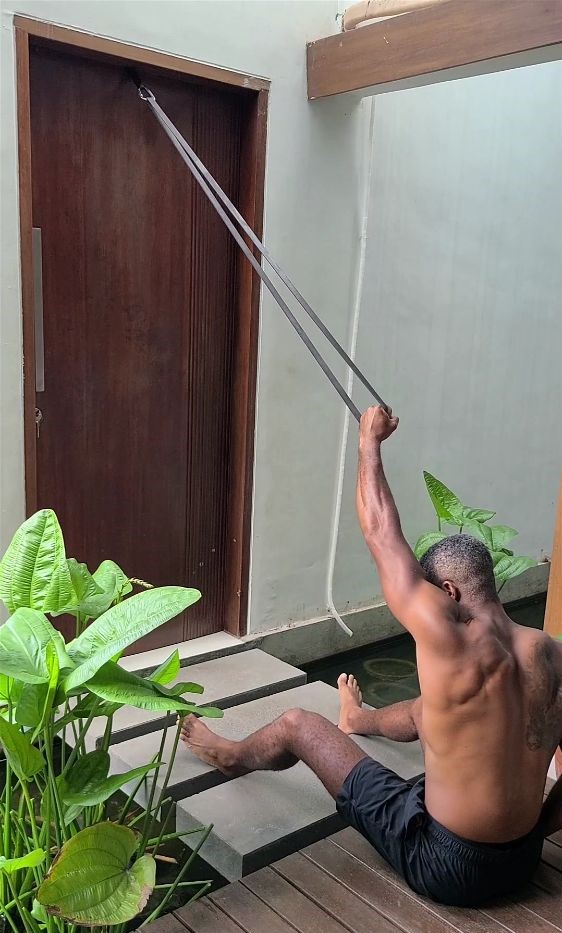
I highly recommend the door anchors from Monkii, and TRX as I’ve owned both and know they are durable, reliable, and well designed. They all allow for quick setup and safe operation.

SLIDERS
Sliders are a tiny piece of kit that generally cost less than $20 and create a slew of tough, effective calisthenics exercises mainly targeting the core by reducing friction on a surface.
A calisthenics slider is a small piece of equipment usually made out of hard plastic with a coarse texture on one side, which helps to provide stability and grip, and a smooth plastic with low friction on the opposite side, which then allows the “slider” to slide freely.

This sliding tool allows us to train our core on the ground, or reduce friction of our feet against the wall in movements such as handstand push ups.
Additionally, the lack of friction lets us train the moves like the splits.
Though specialized exercise sliders are generally best, larger furniture sliders, generally bigger than 5 inches, work well too.
If you are working out on a smooth floor, such as tile, feel free to simply use a towel, pair of socks, or anything else that slides instead.
If you are working out on carpet, you’ll need the sliders. Any well reviewed option on Amazon will do and I recommend these
RECOMMENDED SLIDERS

PIECE OF PLYWOOD ( ~2’X3′)
As simple as a piece of plywood is, the applications in calisthenics are endless.
First, having a piece of plywood is great on carpeted or soft surfaces as it gives us a hard surface to stand on or do handstands on, offering more stability.
Second, the plywood enables lower body movements, such as pistols or calf stretches, by effectively changing the angle of the floor by raising one side using yoga blocks, weights, or any other solid, flat, stable object. This allows us to compensate for range of motion and mobility issues – so we can still do a higher resistance or difficulty movement and continue progressing even if our mobility and flexibility isn’t where we want it to be yet.
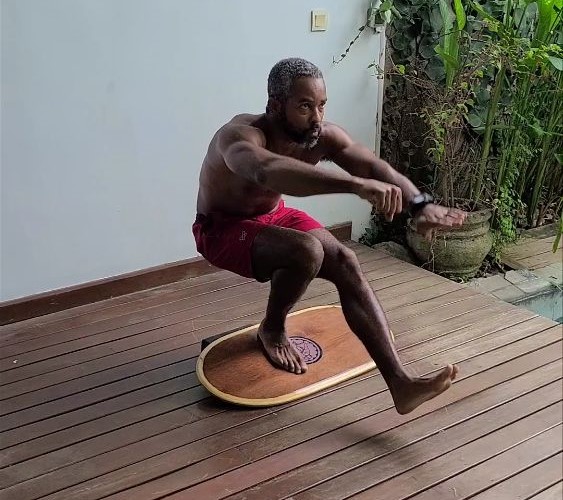
Aim for a 24″ x 30″ piece of plywood
I recommend just going to the hardware store and buying a cheap piece of plywood.

RECOVERY FOR CALISTHENICS
Half of calisthenics based fitness is exercise. The other half, which is just as important, is recovery.
Though are bodies are designed to naturally recover on their own, these tools are clinically proven to speed up recover and get you feeling better, sooner.
- Foam Roller
- Lacrosse Ball
- PVC Pipe
- Voodoo tape

FOAM ROLLER
The foam roller is essential for any home gym and is great for myofascial release or, in other words, unsticking those tissues that stick together and reduce mobility.
My standard training routine is two days of calisthenics exercise followed by one day of recovery, and on my recovery days I always foam roll. Though foam rolling can be uncomfortable sometimes, results are an immediate feeling of relief, an immediate increase in flexibility and range of motion, and increased nutrient-rich blood flow to the recovering muscles that speed up recovery
To use a foam roller simply identify a trouble spot, where there is soreness or lack of mobility, lay on the foam roller with it placed in that spot, and roll. The idea in play is similar to a deep tissue or sports massage except you are doing it to yourself and it is much cheaper.
Virtually any well-rated foam roller on Amazon will work as brand doesn’t matter much for these.
RECOMMENDED FOAM ROLLERS
TRIGGERPOINT GRID FOAM ROLLER (The Originator)

LUXFIT FOAM ROLLER (Budget Option)


LACROSSE BALL (FOR RECOVERY)
While the foam roller applies the technique of myofascial release distributing the pressure over a wide area, like the whole underside of your hamstrings, lacrosse balls are used for the same technique except on a much more focused point, like that crook between your butt cheek and your hamstring. The discomfort will be higher, but the recovery will be faster.

Additionally, the lacrosse ball is so small it can be taken anywhere – to work, on a plane, traveling – allowing you to work on muscle recovery anywhere you have time.
Any lacrosse ball or yoga ball will work and you can find them cheaply on Amazon.
I highly recommend buying a lacrosse ball as it is an essential piece of calisthenics equipment for recovery.
Any lacrosse ball on Amazon will work just fine.

PVC PIPE OR WOODEN DOWEL
A length of PVC pipe, ideally ~48 inches in length, is perfect for warming up the shoulders and upper body via exercises such as shoulder dislocates, for anchoring the shoulders to on shoulder rotation mobility, and for deep myofascial release, just like with a lacrosse ball or foam roller.
I recommend going to a hardware store to by a piece of PVC pipe, however a broomstick or tough wooden dowel will work just as well.
Additionally, the Rogue Fitness War Bar is cheap and delivers the same effectiveness.
RECOMMENDED MOBILITY BARS

VOODOO TAPE (MOBILITY TAPE)
Voodoo tape is an interesting and advanced mobility and recovery tool.

This tape can be wrapped around a joint or muscle to “trap” the tissues in place where they “should” be. Then, we simply move through our normal range of motion gently for ~2 minutes. In those 2 minutes, the tissues above and below the joint regain mobility and their sliding nature, while blood flow is encouraged underneath the wrapped portion.
The result is a 2 minute quick fix to help “sticky tissues” in our body return to a healthy, pliable, sliding nature.
A similar tape on Amazon will work as brand doesn’t matter in this case and cheaper is better. I used to use an old bicycle innertube before this “floss” became mainstream.
RECOMMENDED MOBILITY TAPE
Now that you hopefully have a piece of equipment for pulling (rings or suspension trainer), resistance bands to increase resistance, decrease resistance, and stretch, and a few tools for stretching, mobilizing, and recovery, we’ll get into extra calisthenics toys that can make your calisthenics workout a little more fun

OTHER GREAT PIECES OF CALISTHENICS EQUIPMENT TO CONSIDER
- Weight Vests
- A “rucksack” and weight plate
- Speed Rope
- Yoga blocks
- Chalk
- Calisthenics Gloves

WEIGHT VESTS
A calisthenics weight vest is useful for building muscular endurance and power in calisthenics exercises by quickly increasing resistance without changing any other element of the exercise.
Weight vests offer a convenient way to add resistance during calisthenics, bodyweight calisthenics, and gymnastics calisthensics while doing the exact same exercise. On the other hand, in “calisthenics progressions” we have to constantly change leverage, body angle, and potentially use resistance bands to adjust resistance. By using a weight vest, we can progress in the same exercise just by adding a little weight.
Weight vests have the added benefit of doubling for high intensity interval training (HIIT) workouts by only using calisthenics. Normally simple calisthenics, such as air squats, push ups, or rows, don’t offer enough resistance to create a good, muscle building HIIT workout that also trains cardio, work capacity, and muscular endurance. With weight vests, we can.
DO NOT GO CHEAP ON WEIGHT VESTS!
Weight vests are one of the pieces of equipment that we want to aim for high quality on.
A good weight vest will be tough enough to handle ample weight, will keep the weight snug and from moving, and will stay comfortable through the entire workout. If a weight vest doesn’t have positive review in those three areas, skip it.
I highly recommend these weight vests
RECOMMENDED WEIGHT VESTS
I intentionally pick tactical plate carrier style vests simply because they are extremely tough and stay very snug on the body under heavy weight compared to lighter, wetsuit like neoprene vests.
- GORUCK Weight Training Vest
- Rogue Fitness Weight Plate Carrier
- 5.11 Tactical Vest
- Condor Sentry Plate Carrier (Budget Option)
- Checkout the weight vest options on Amazon for plenty of other great choices
If you have a weight vest and want some great HIIT calisthenics workouts, I recommend these

A “RUCKSACK” OR TOUGH BACKPACK AND WEIGHT
An alternative to a weight vest is a “ruck sack” with a good weight.
A rucksack is a backpack designed specifically to carry heavy amounts weight. Specialized rucksacks, like those from GORUCK have special pockets designed to keep the weight from shifting while you move.

I highly recommend the GORUCK backpack line, either the GORUCK Rucker, or the GORUCK GR1, as well as their smalller packs.
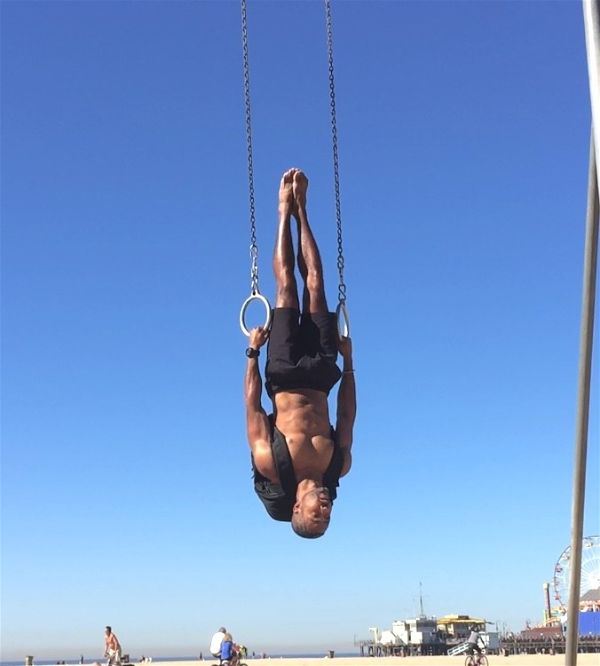
These tough backpacks are not only built to hold 400lbs, stay incredibly snug and have overpadded straps as well as a lifetime guarantee, but they make great daily use bags.
For weight, I highly recommend using sandbags, sandbag filler bags, or sandbag kettlebells because the soft weights will be safer. However I have and use ruckplates as well.
For more ideas, read our post on best ruck weights.

SPEED ROPE
A speed rope is a short rope, usually between 2 and 3 feet long, made of a usually tough stainless steel braid and a tough handles. The design improves the speed of the rope, allowing you to do higher intensity moves like doubleunders, while the durability extends the lifetime over old school ropes.

Speed ropes have been used for decades by athletes in many sports to increase hand quickness and add variety to calisthenic workouts. They are an inexpensive way to incorporate calisthenics into your workout routine without investing in too much calisthenics equipment or overdoing calisthenics as well.
Adding a speed rope to your calisthenics kit gives you a quick and easy way to incorporate cardio into your workout, without running, and without a treadmill.
Brand doesn’t matter much, just aim for a well reviewed (4.5+ stars from lots of reviewers) speed rope on Amazon.
RECOMMENDED SPEED ROPES

YOGA BLOCKS
Yoga blocks are an inexpensive piece of calisthenics equipment to incorporate into a calisthenics workout. They offer support for the feet in calisthenics workouts that require balance, either when training the hands or feet. We can also use the blocks as balance supports while doing push-ups or handstands and use the blocks to raise the level of the hands or feet, to increase or decrease difficulty in movements.

I recommend purchasing two yoga blocks as you will commonly use them in pairs.
The most common way I use blocks is underneath the plywood plank to shift the angle of the ground and allow for a more difficult single leg squat without requiring too much ankle mobility.
I use and recommend these Nirvana that double as parallettes – with the handle stored inside the yoga block when not in use.

Beyond the Nirvana blocks, brand doesn’t matter. Any reasonably priced, well reviewed yoga blocks on Amazon will work perfectly.

CHALK
Chalk is not absolutely necessary but is convenient, to dry sweat and improve grip, especially if your parallettes and gymnastics rings are made of plastic.

At home, I choose not to use chalk because I want to avoid the mess in my house and instead opt to carry a cheap, small microfiber towel to frequently dry my hands and equipment.
However, at the gym I find chalking up (when I don’t have to clean up the mess) is convenient. To keep things easy, pair a rock climbing chalk bag, like this, with a simple chalk ball like this. Then chalk up and get to work.

CALISTHENICS GLOVES
If you don’t want your hand to get too rough or you don’t want the mess of chalk, consider getting a pair of workout gloves. These are absolutely not necessary, but simply a question of personal preference.

OTHER GOOD HOME GYM, TRAVEL FRIENDLY FITNESS EQUIPMENT
Though these pieces of equipment aren’t exactly calisthenics equipment, they are perfect for any home gym.

Cheap and versatile in how you can use them, sandbags and sandbag kettlebells are perfect for creating the resistance necessary for a cardio challenging HIIT workout or recreating an intense Crossfit workout, while still being portable.
Training various levels of resistance, movements, and intensities will help you progress in your calisthenics move faster while building more muscle and burning more fat.
If you don’t intend to be a calisthenics purist and have already purchased the basics (rings, parallettes, resistance bands), I highly recommend a sandbag or sandbag kettlebell to complete your kit.

SANDBAGS
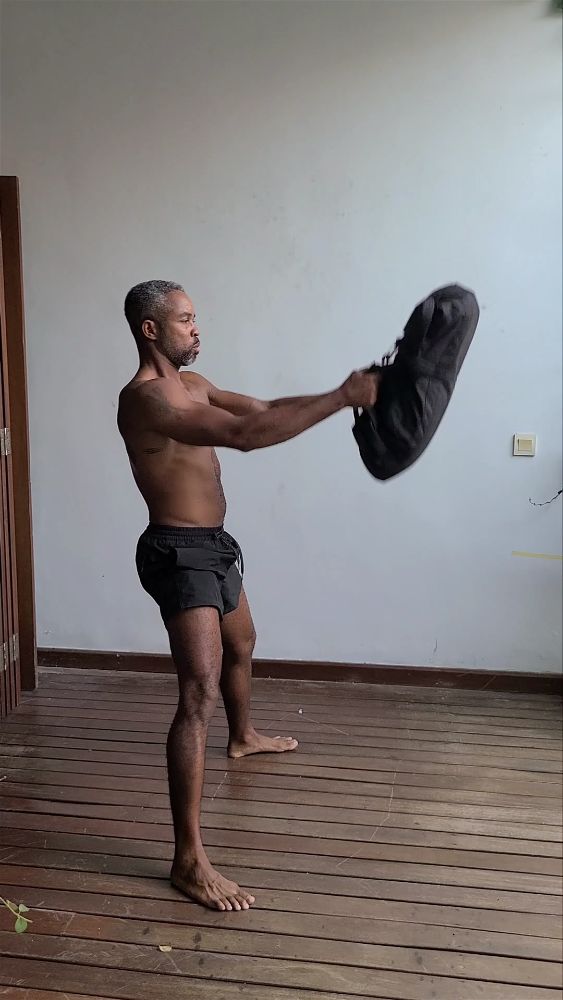
Heavy duty sandbags are designed for various weights, from 20lbs to 120lbs+, and come equipped with handles that make them suitable for HIIT workouts the same way dumbbells or an Olympic bar would be used.
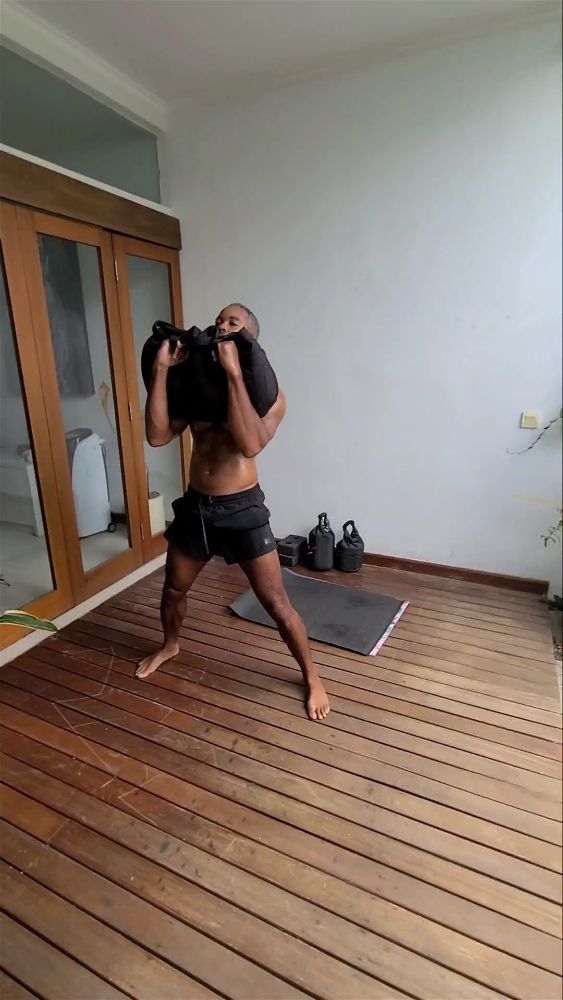
Sandbags can double as a weight, placed in a backpackpack to easily increase resistance in calisthenics moves.
Abrasion and tear resistance Cordura nylon bags are best as they can be thrown around and abused much more than their TPU coated counterparts
I own and recommend GORUCK sandbags and Rogue fitness sandbags, however Rogue Sandbag, and the Garage Fit sandbags have proved to be excellent too.
RECOMMENDED PARALLETTES

SANDBELLS

A combination of a sandbag and a kettlebell, sandbells are an easy option for adding weight to a backpack for calisthenics while still doubling as a kettlebell for HIIT workouts for cardio and stamina, as well as strength and muscular endurance workouts.
Kettlebells have been most popularized by Crossfit workouts, but they are perfectly suitable for any workout or bootcamp style fitness routine that would otherwise require weights. Unlike dumbbells or barbells though, kettle bells offer a strange mix of flexibility and total stability that can’t be expressed with calisthenics equipment alone, making sandbag kettlebells a great addition to your workout equipment arsenal
Consider these three options
RECOMMENDED SANDBAG KETTLEBELLS

CALISTHENICS EQUIPMENT FAQ
What equipment do you need for calisthenics
There are three calisthenics equipment pieces that you need to buy: parallettes, rings (or a suspension trainer), and resistance bands.
You don’t need all three calisthenics equipment pieces. It’s up to you which pieces you want to get. Rings are not necessary if you’re just planning on calisthenics workouts at home and don’t have any open space outside of your house in order to do calisthenics workouts freehand or with parallel bars.
———-
Can you build muscle with calisthenics?
Yes, calisthenics can be used for building muscle, as long as resistance is sufficient. Sufficient resistance for muscle growth can be achieved through calisthenics progressions without weights.
However, if the athlete is unfamiliar with progressions, resistance for muscle growth can be achieved using resistance bands or a weight vest
———-
What are the best calisthenics exercises?
The best calisthenics exercises are the ones that challenge you the most, especially when you start out. You’ll be able to easily build muscle and get fast results by starting calisthenics with challenging calisthenics moves.
If you’re not sure where to start, try these calisthenics exercises:
– Pull-ups
– Dips
– Handstand Push Ups
– Single Leg Squats (Pistols)
– Hollow Rocks
———-
Is calisthenics better than weightlifting?
There is no “best” between calisthenics and weightlifting. There are significant differences and benefits in both calisthenics and weightlifting that make them both effective exercises for different purposes.
Calisthenics is a lower-impact exercise, which makes it great for people who have health conditions like joint problems or back pain. Calisthenics workouts can also be more convenient if you live in an apartment and don’t have access to a gym.
Weightlifting, on the other hand, is a higher-impact exercise, which means it might not be as safe for people with certain health conditions. Weightlifting requires much more equipment and space than calisthenics. However, in weightlifting it is easier to achieve higher intensity and higher resistance quickly.



ABOUT THE AUTHOR
Carlos is a nomad, slow traveler, and writer dedicated to helping others live abroad and travel better by using his 7+ years of experience living abroad and background as a management consultant and financial advisor to help other nomad and expats plot better paths for an international lifestyle. Click here to learn more about Carlos's story.









